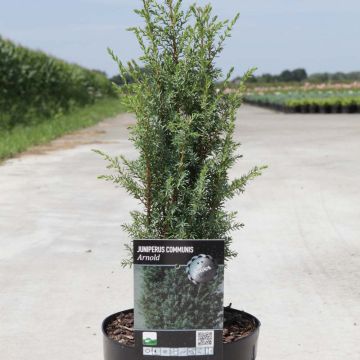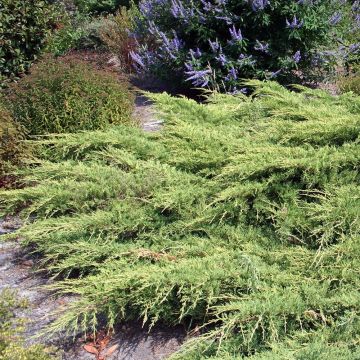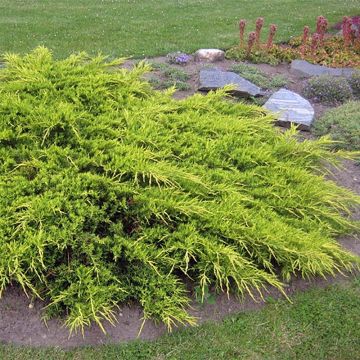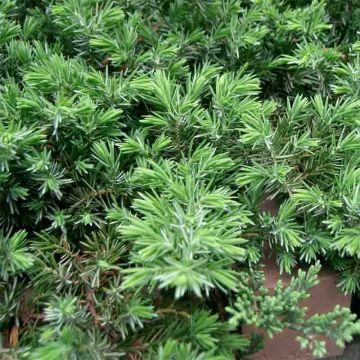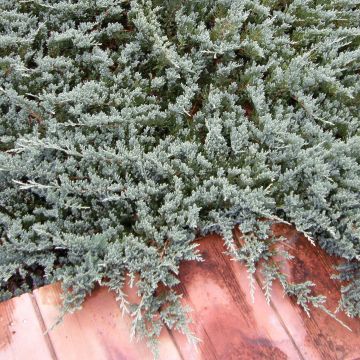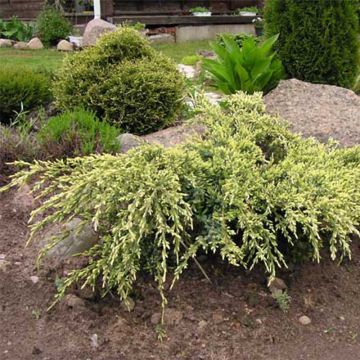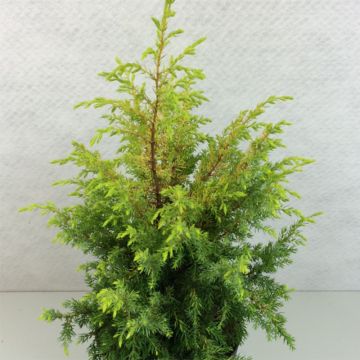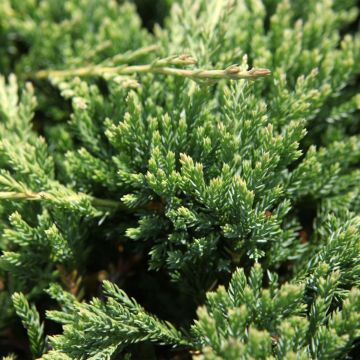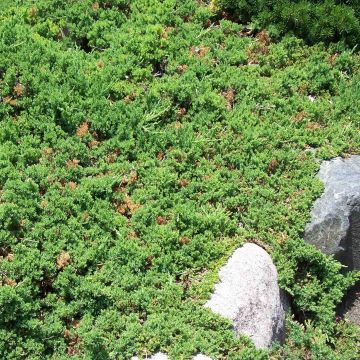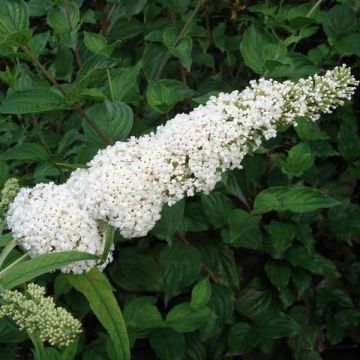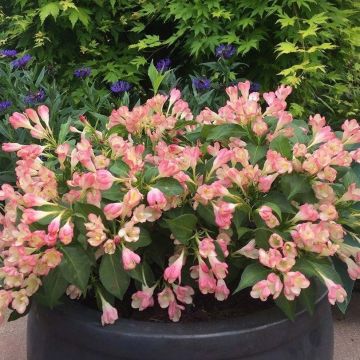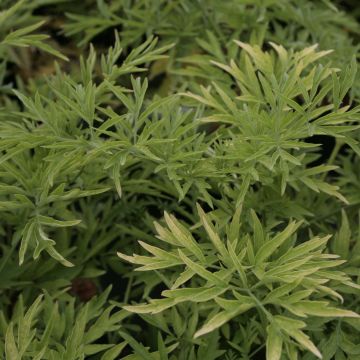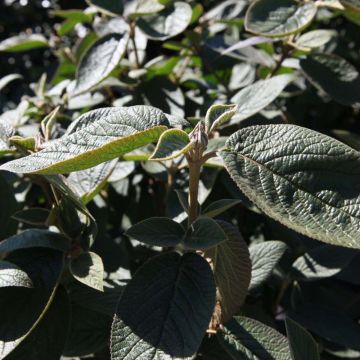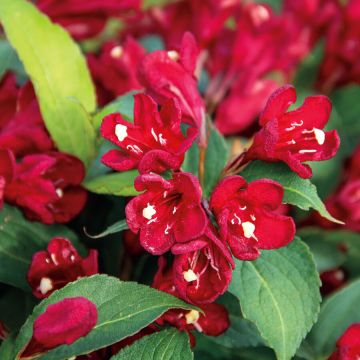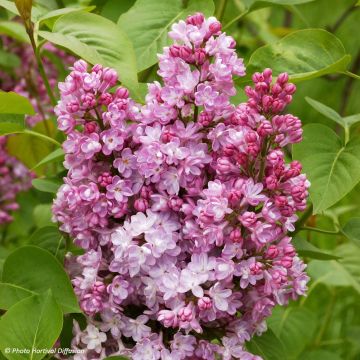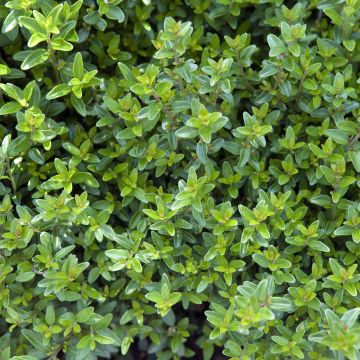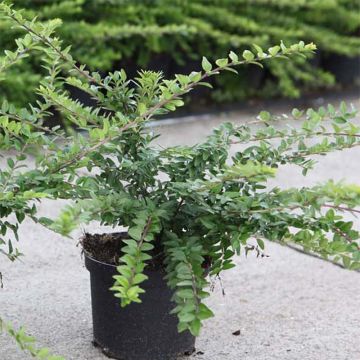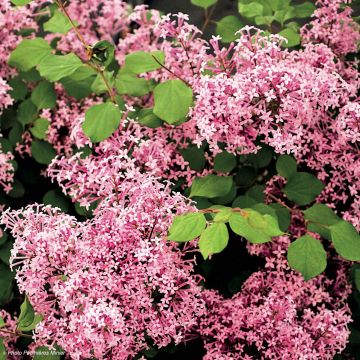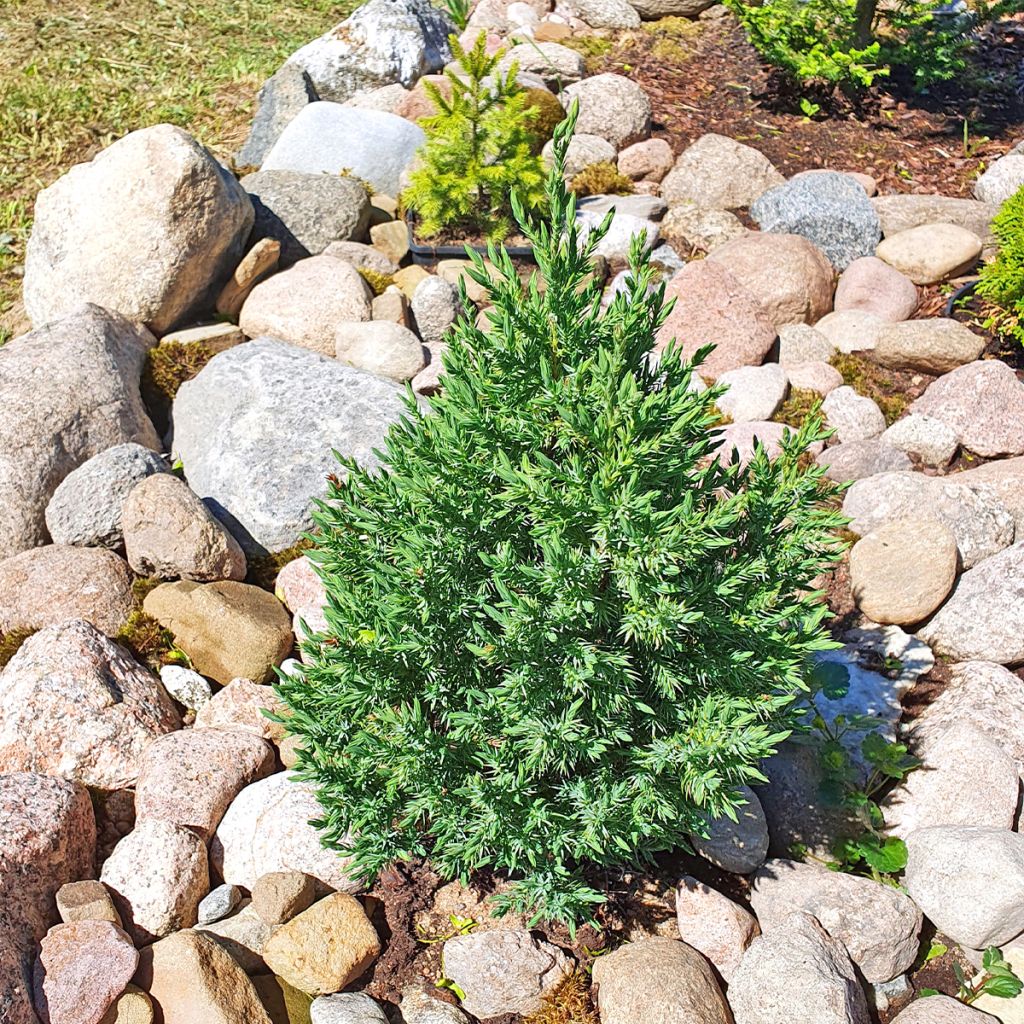

Juniperus chinensis Stricta
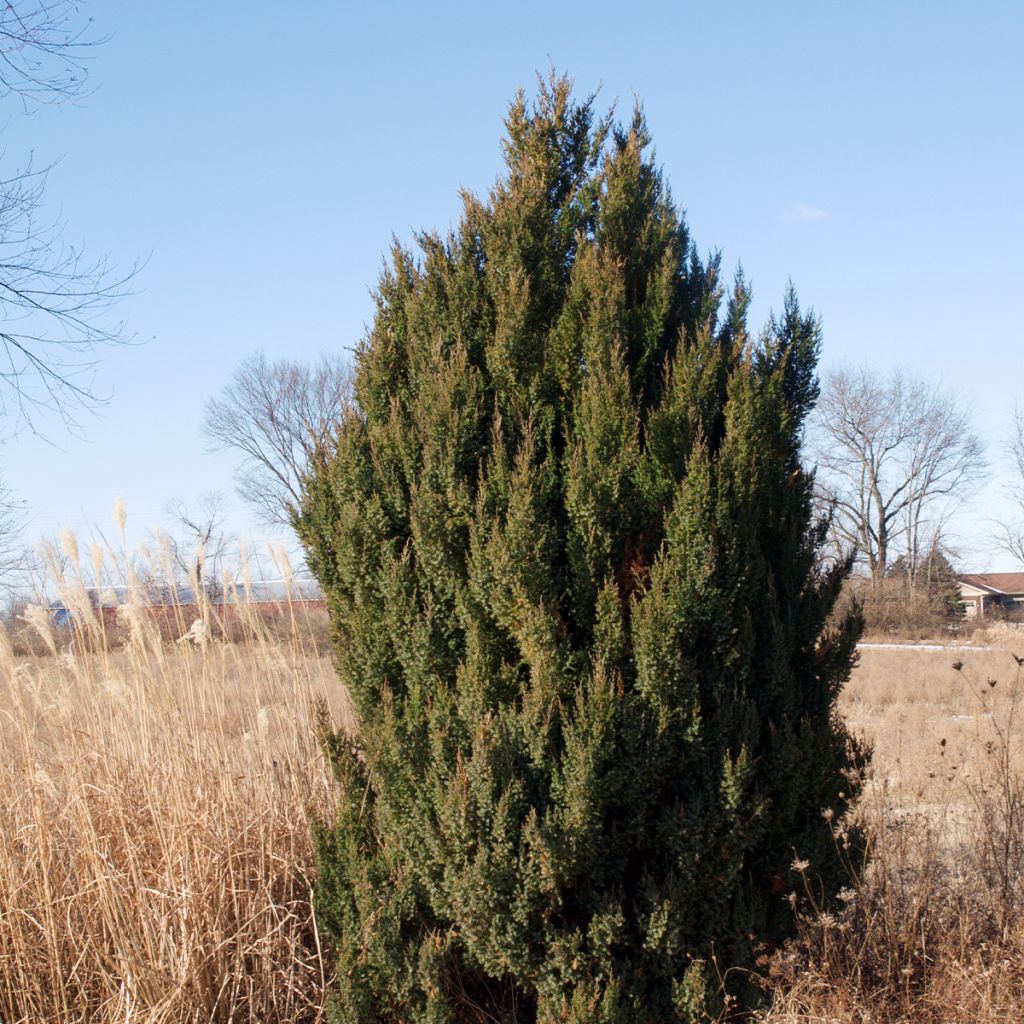

Juniperus chinensis Stricta
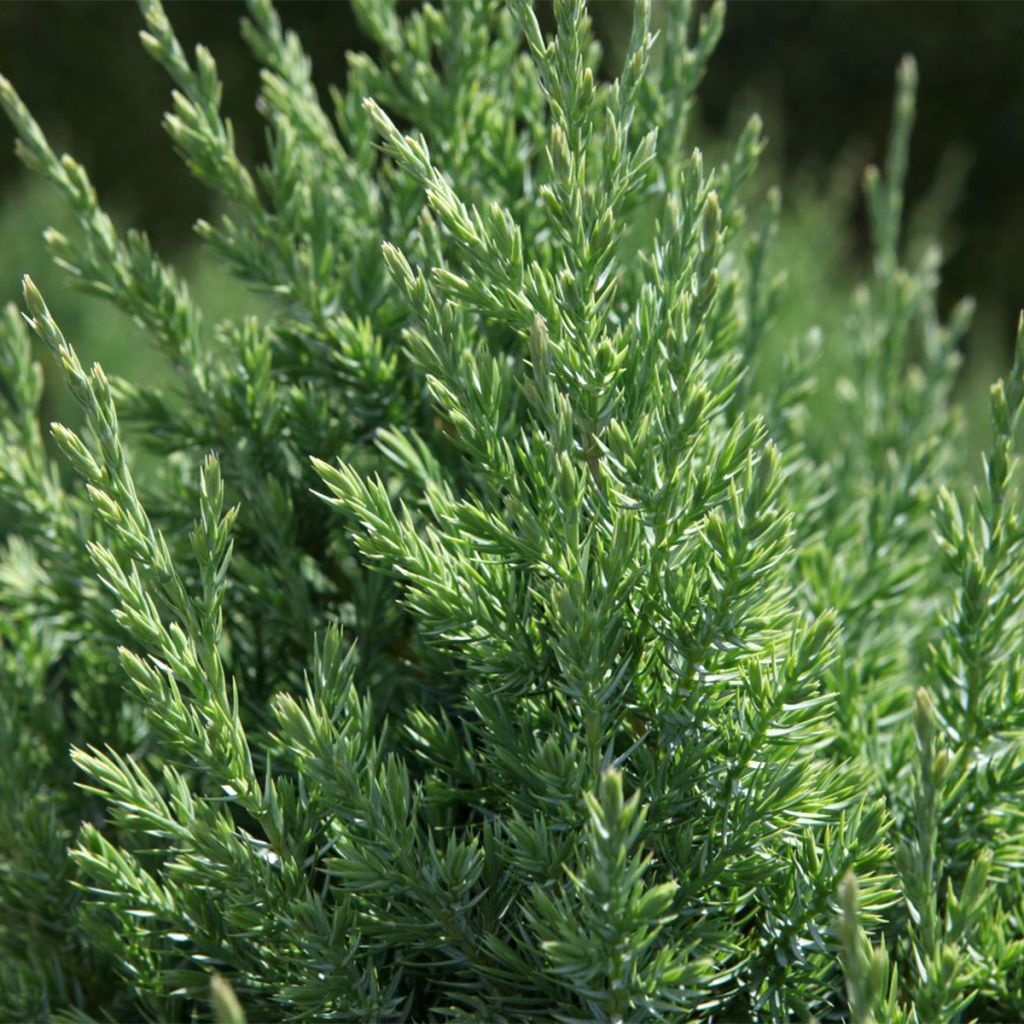

Juniperus chinensis Stricta
Juniperus chinensis Stricta
Juniperus chinensis Stricta
Chinese Juniper
Very lovely little bushes with perfectly regular shape. The light colour is bright. Perfect for the purpose they were intended for, which is the natural decoration of a miniature railway network in the garden.
Catherine, 11/05/2022
This item cannot be shipped to the selected country
Delivery charge from €5.90
Delivery charge from €5.90
Delivery charge from €5.90
Delivery to Corse prohibited
More information
Schedule delivery date,
and select date in basket
This plant carries a 24 months recovery warranty
More information
We guarantee the quality of our plants for a full growing cycle, and will replace at our expense any plant that fails to recover under normal climatic and planting conditions.
From €5.90 for pickup delivery and €6.90 for home delivery
Express home delivery from €8.90.
From €5.90 for pickup delivery and €6.90 for home delivery
Express home delivery from €8.90.
From €5.90 for pickup delivery and €6.90 for home delivery
Express home delivery from €8.90.
Delivery to Corse prohibited: UE law prohibits the import of this plant from mainland France to Corse as part of the fight against Xylella fastidiosa. Please accept our sincere apologies.
More information
Does this plant fit my garden?
Set up your Plantfit profile →
Description
Juniperus chinensis 'Stricta' is a Chinese Juniper with an upright and conical habit in its early years. As it ages, it tends to broaden while maintaining an interesting upright form. Its foliage is its greatest asset: bluish-green for most of the year, it turns steel blue in the cold of winter, which enhances its decorative interest. Juniperus chinensis 'Stricta' is an easy plant to grow as it is very adaptable. It appreciates a certain freshness of the soil but once well established, it tolerates dry conditions quite well. It thrives in neutral to alkaline soil, even poor or sandy soil. A sunny exposure is recommended, but it also tolerates partial shade.
Juniperus chinensis is a member of the Cupressaceae family, which includes other well-known conifers such as Chamaecyparis, Thuja, Cupressus, or less common ones, such as Calocedrus or Tetraclinis. Native to Asia (China, Japan, Korea, Russia), it is generally a large tree, measuring 20 m to 25 m (66 ft to 8 ft) with a more or less pyramidal shape.
This variety has much smaller dimensions adapted to our gardens. In fact, it will reach a height of 2 m to 2.5 m (6.6 ft to 8.2 ft) and a width of 80 cm to 100 cm (31.5 in to 39.4 in) in about ten years. Its habit is upright, with a pointed cone shape, and tends to broaden slightly with age. Its dense foliage consists of small non-prickly leaves. It is bluish-green for three-quarters of the year, and takes on a striking steel blue colour in winter. This shrub inherited from its origins a great hardiness (beyond -25° C (-13° F)) as well as an ability to adapt to different growing conditions. It is rather tolerant of soil, from neutral to alkaline, and can also grow in sandy, even poor soil, as is usually the case. This juniper grows in moderately moist to occasionally dry substrate, it just requires good drainage as it does not tolerate stagnant water. It prefers full sun but tolerates partial shade for part of the day. It is therefore a good plant to start with in the garden as it is generally very tolerant and can withstand atmospheric pollution, which is an advantage in urban areas. Its moderate growth makes it suitable for smaller gardens, planted in rockeries, mixed borders or as a solitary specimen. Its limited growth also allows it to be grown in containers, to decorate a balcony or terrace. A light annual pruning will be sufficient to limit its growth and give it a perfect shape. It can also be planted in groups of different sizes, possibly trained as topiary to create a remarkable scene.
This highly decorative small conifer will benefit from being planted with other conifers with coloured foliage, especially gold-coloured foliage, preferably in a spreading form to create a double contrast of shape and colour. You can choose Taxus baccata 'Summergold' (common golden yew) with its golden young foliage that later turns bronze and then dark green, creating a scene with changing colours throughout the seasons. 'Goldkissen' juniper will also be a good companion for a yellow/green-blue contrast. Among deciduous plants, you can opt for Cotinus coggygria 'Golden Lady', a smoke tree with changing foliage, from yellow to orange. 'Black Beauty' elderberry with purple foliage will create a dark background that will enhance our green-blue juniper, plus the added advantage of beautiful pink summer flowering.
Purple or almost black foliage will also be interesting for creating attractive scenes, such as those of the series of black Indian lilacs (Black Solitaire, Blush, Best Red or Crimson Red depending on the flower colour). This way, you will benefit from the bicoloured foliage of the juniper, a bordeaux-black foliage in the summer, dazzling flowering in summer, and decorative bark that will become increasingly beautiful over the years.
Report an error about the product description
Juniperus chinensis Stricta in pictures
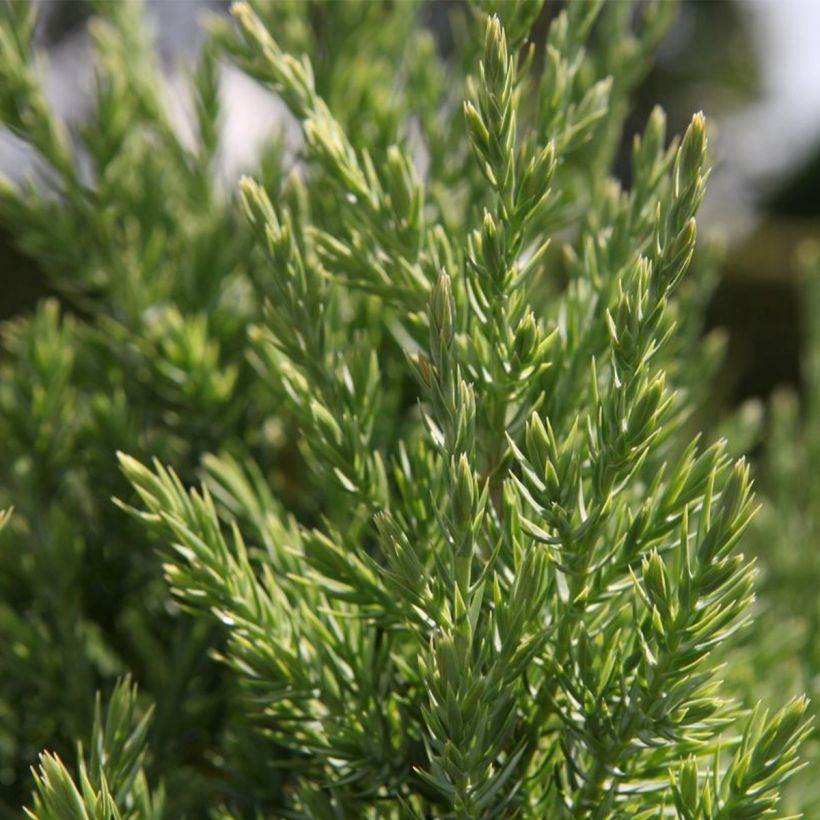

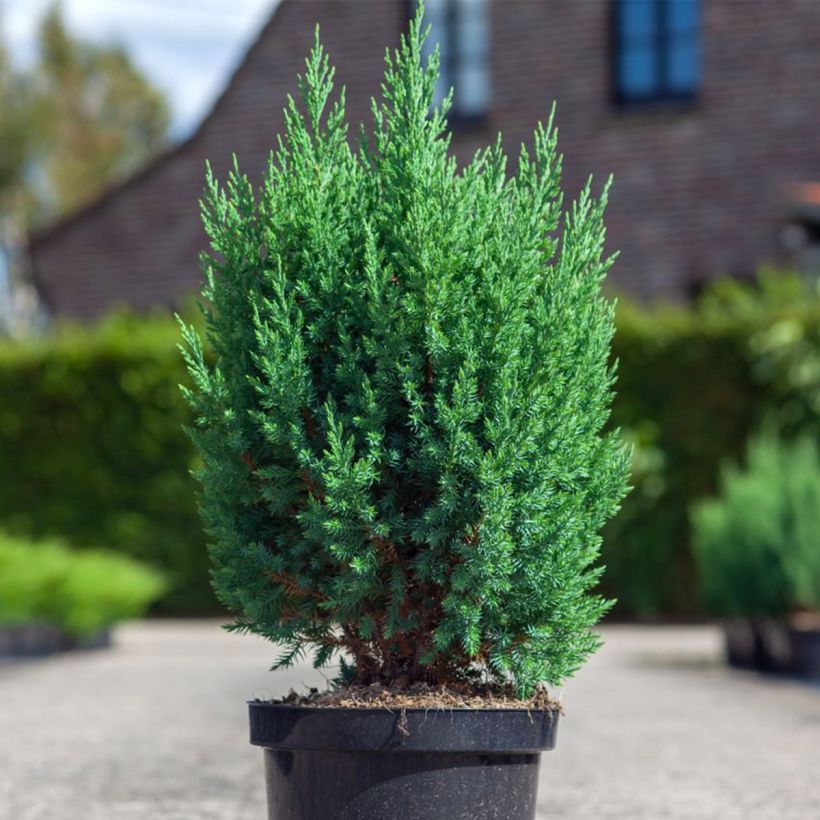

Plant habit
Foliage
Safety measures
Botanical data
Juniperus
chinensis
Stricta
Cupressaceae
Chinese Juniper
Cultivar or hybrid
atteinterespiratoire
Cette plante peut entraîner des symptômes allergiques.
Evitez de la planter si vous ou vos proches souffrez de rhinite saisonnière ("rhume des foins").
Davantage d'informations sur https://plantes-risque.info
Other Juniperus - Juniper
Planting and care
Plant from September to November and from February to April in well-drained, light, even limestone and poor soil. Rocky or sandy soil that is occasionally dry does not bother it, even though it also likes freshness. Preferably choose a sunny location, or partially shaded with a few hours of sun per day. Soak the root ball well in a bucket of water before planting, and water after positioning the plant and filling the planting hole. Add organic matter at planting and water sufficiently in the first few years, in case of prolonged drought. Apply a special conifer fertiliser every year in April and weed the soil in summer. This very hardy conifer cannot withstand heavy, waterlogged soils in winter. Pruning is not necessary, but can be done to limit growth if the juniper is planted in a container, or to perfect its shape if it is grown as topiary.
Planting period
Intended location
Care
-
, onOrder confirmed
Reply from on Promesse de fleurs
Foolproof Shrubs
Haven't found what you were looking for?
Hardiness is the lowest winter temperature a plant can endure without suffering serious damage or even dying. However, hardiness is affected by location (a sheltered area, such as a patio), protection (winter cover) and soil type (hardiness is improved by well-drained soil).

Photo Sharing Terms & Conditions
In order to encourage gardeners to interact and share their experiences, Promesse de fleurs offers various media enabling content to be uploaded onto its Site - in particular via the ‘Photo sharing’ module.
The User agrees to refrain from:
- Posting any content that is illegal, prejudicial, insulting, racist, inciteful to hatred, revisionist, contrary to public decency, that infringes on privacy or on the privacy rights of third parties, in particular the publicity rights of persons and goods, intellectual property rights, or the right to privacy.
- Submitting content on behalf of a third party;
- Impersonate the identity of a third party and/or publish any personal information about a third party;
In general, the User undertakes to refrain from any unethical behaviour.
All Content (in particular text, comments, files, images, photos, videos, creative works, etc.), which may be subject to property or intellectual property rights, image or other private rights, shall remain the property of the User, subject to the limited rights granted by the terms of the licence granted by Promesse de fleurs as stated below. Users are at liberty to publish or not to publish such Content on the Site, notably via the ‘Photo Sharing’ facility, and accept that this Content shall be made public and freely accessible, notably on the Internet.
Users further acknowledge, undertake to have ,and guarantee that they hold all necessary rights and permissions to publish such material on the Site, in particular with regard to the legislation in force pertaining to any privacy, property, intellectual property, image, or contractual rights, or rights of any other nature. By publishing such Content on the Site, Users acknowledge accepting full liability as publishers of the Content within the meaning of the law, and grant Promesse de fleurs, free of charge, an inclusive, worldwide licence for the said Content for the entire duration of its publication, including all reproduction, representation, up/downloading, displaying, performing, transmission, and storage rights.
Users also grant permission for their name to be linked to the Content and accept that this link may not always be made available.
By engaging in posting material, Users consent to their Content becoming automatically accessible on the Internet, in particular on other sites and/or blogs and/or web pages of the Promesse de fleurs site, including in particular social pages and the Promesse de fleurs catalogue.
Users may secure the removal of entrusted content free of charge by issuing a simple request via our contact form.
The flowering period indicated on our website applies to countries and regions located in USDA zone 8 (France, the United Kingdom, Ireland, the Netherlands, etc.)
It will vary according to where you live:
- In zones 9 to 10 (Italy, Spain, Greece, etc.), flowering will occur about 2 to 4 weeks earlier.
- In zones 6 to 7 (Germany, Poland, Slovenia, and lower mountainous regions), flowering will be delayed by 2 to 3 weeks.
- In zone 5 (Central Europe, Scandinavia), blooming will be delayed by 3 to 5 weeks.
In temperate climates, pruning of spring-flowering shrubs (forsythia, spireas, etc.) should be done just after flowering.
Pruning of summer-flowering shrubs (Indian Lilac, Perovskia, etc.) can be done in winter or spring.
In cold regions as well as with frost-sensitive plants, avoid pruning too early when severe frosts may still occur.
The planting period indicated on our website applies to countries and regions located in USDA zone 8 (France, United Kingdom, Ireland, Netherlands).
It will vary according to where you live:
- In Mediterranean zones (Marseille, Madrid, Milan, etc.), autumn and winter are the best planting periods.
- In continental zones (Strasbourg, Munich, Vienna, etc.), delay planting by 2 to 3 weeks in spring and bring it forward by 2 to 4 weeks in autumn.
- In mountainous regions (the Alps, Pyrenees, Carpathians, etc.), it is best to plant in late spring (May-June) or late summer (August-September).
The harvesting period indicated on our website applies to countries and regions in USDA zone 8 (France, England, Ireland, the Netherlands).
In colder areas (Scandinavia, Poland, Austria...) fruit and vegetable harvests are likely to be delayed by 3-4 weeks.
In warmer areas (Italy, Spain, Greece, etc.), harvesting will probably take place earlier, depending on weather conditions.
The sowing periods indicated on our website apply to countries and regions within USDA Zone 8 (France, UK, Ireland, Netherlands).
In colder areas (Scandinavia, Poland, Austria...), delay any outdoor sowing by 3-4 weeks, or sow under glass.
In warmer climes (Italy, Spain, Greece, etc.), bring outdoor sowing forward by a few weeks.

































